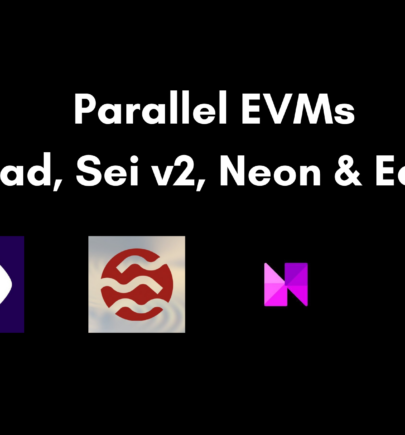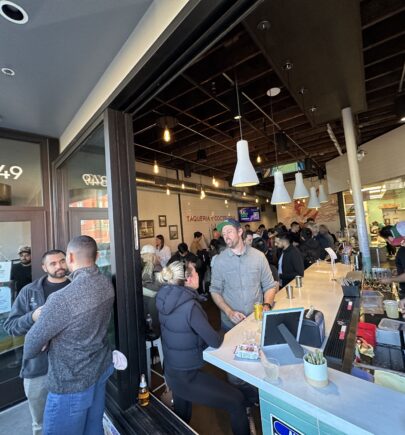IEOs are literally coming to the West

Yesterday, we kicked off our new GCR workshop series with our first ever workshop with Richy Qiao, Chief Business Officer of Ampleforth. Ampleforth will be the first project to IEO on Bitfinex.
In the workshop, Richy discussed the current trends in IEOs that he is seeing in the market and here are some takeaways that may surprise you:
- There are a number of US exchanges that are looking to set up their own sort of IEO and issuance platforms, according to Richy. In his article titled “Will IEOs Come to the WEST? Maybe.”, which we have shared in full below, Richy teased, “What are some exchanges that could be likely to do so [form IEO platforms]? Poloniex, Bitfinex and to some extent Kraken. What are exchanges that would never dream, dare or care to? Coinbase and Gemini.” in the last few months, I’ve also spoken to many western grade A, B+ projects that are also paying attention to this trend and placing IEOs on the back burner. In the next few months, we should expect some interesting announcements and innovations surfacing in the US.
- If you look at the projects listed by Binance Launchpad, Binance’s IEO platform, over the course of the last year, you’ll see a pattern that’s telling of what the Binance listing team is looking for from the metrics and selling schedule. Namely, token release schedule for a listed project is worth paying attention to. The release schedule for the IEO, the eco-fund, and then a typical long lockup period for founders and advisors. So clearly, the exchanges are looking for team that is confident in their tokens and long term commitment to stick through.
- Bitfinex’ token sale will encourage transparency and equal access: Richy highlighted some differences between Binance Launchpad, Huobi Prime and Bitfinex Tokinex model. For one, Binance Launchpad’s lottery system enables investors to increase their chance of acquiring the listed token by staking more BnB, whereas Huobi requires investors to hold a minimum amount of Huobi tokens to get priority access. Bitfinex, on the other hand, is looking to distribute its tokens on Tokinex on a first come first serve basis. Richy mentions that the team at Bitfinex is aiming to create an equal, fair and transparent sale process. Everyone will have fair access to the projects, without a fee.
- Lastly, Richy highlighted the significant amount of effort required to do an IEO. For one, the legal cost is a significant upfront cost for any project considering going this route. Ampleforth used Fenwick and West. However, once you have all the paperwork ready, the IEO process will move very quickly and will only take about a month.
- Richy’s advice for projects that are thinking about IEOs: onboard the best legal counsels, think about market timing and your product readiness. Richy’s top 3 reasons for why projects will benefit from IEO: legal token distribution with KYC/AML, branding and recognition by passing the vetting of the exchanges, and investor diversity
From speaking to Richy and seeing this increasing trend to “Copy from China” (more references below), I realized one thing. While we wait for real use cases and blockchain adoption to occur in the next few years (or 10 years), the exchanges in the meantime will gain increasingly more influential and powerful. They will become the future digital banks, and drive a large part of the types of users and members we see coming into the community ecosystem. What I hope they can do is use it for good and to foster quality projects in the ecosystem, but I’m sure that will be an ongoing struggle with their goals of monetization.
We had an amazing and interactive session and discussion with Richy and our community, and our replay is here, available only for our premium subscribers.
Will IEOs Come to the WEST? Maybe. by Richy Qiao
By now, we’ve already seen plenty of articles and blog posts extolling the virtues of IEOs, but it was not until recently we came back to Earth and examined the potential cons of the new fundraising mechanism as is common in the blockchain world: MOON-first, ask questions later. Even Changpeng Zhao, CEO of Binance, originally issued a personal statement back in 2018, showing hesitancy on issuing IEOs on their platform.
The potential longevity of CEOs and the state of the crypto-industry may be hotly contested, but it is now becoming more and more apparent that the IEO may yet get a second wind. Until now the IEO has largely been an Asian phenomenon. But as the Sun sets in the East, it begins to rise in the West.
Within the ‘traditional start-up’ world – “Copy-From-China” is increasingly gaining momentum (just look around South Bay at the Lime scooters zooming by if you’re in doubt). In this sense, it would only be natural for this pattern to seep into our beloved crypto/blockchain world… and I predict it will, à la Initial Exchange Offering (IEO).
How and why did this start?
The ICO market was overheating within late 2017 to early 2018 but grew to a frigid standstill by late 2018 (remember the pre-Thanksgiving BTC crash?). There was a confluence of multiple events as crypto-institutional investor sentiment turned.
Some of the factors driving this included, but was not limited to:
- The use-case for projects did not pan out;
- adoption was much slower than expected (crypto-kitties held the charts at DappRadar for a long-long time with only 500 DAUs) and
- the promise of institutional money began to look delusional (“the herd has been coming” since 2017, just like the Starks with their ‘Winter’).
Additionally, as the market began sliding (around -80% in the calendar year of 2017-2018), token-holders realized they had little to no rights typically granted to traditional shareholders. For example, fiduciary duty on the part of the management team to token-holders is still an unclear and hotly contested subject, which the courts will look to slowly sort out. When the high tide is over, you’re able to really see who was swimming naked.
Projects felt the squeeze as well, even though the minimum bar demanded of crypto-startups seemed to increase. Even the higher-quality projects with more fleshed-out tech, roadmaps, and polished teams, which could have commanded $200M+ network valuations in 1Q18, struggled to raise at a fraction of those highs. On top of this, there was genuine retail investor fatigue as the market lost ground from the bull-run high, which abruptly ended in January 2018 and quickly declined almost -60% points in 1H18. When the money was no longer rolling in, retail ‘syndicates’ began in-fighting, and the presence of scams, fraud, lack of consumer protection and minimal transparency on the part of projects delivering on their roadmap became painfully obvious. Furthermore, there was no guarantee of liquidity or listing, as only 7% of projects from 2Q18 were able to secure listings by early 4Q184.
Not to be forgotten, the monoliths of the crypto-industry, the exchanges themselves, also began facing the come-down from the 2017 sugar high. Firstly, the number of exchanges during this time had exploded, from a handful to over 500 by mid-April 20185. This growth in the number of exchanges was not matched by an equal growth in crypto-users/traders – the industry’s ratio of users to exchange dropped. As the market came down there was more competition for a shrinking pie.
However, a strategic direction of exchanges that had long been set in motion was their vertical integration of the traditional financial services stake, taking responsibilities of multiple traditional service providers such as exchange, clearinghouse, custodian bank, etc. It was natural for the exchange ‘arms race’ to heat up and for certain exchanges to begin looking at another piece of the puzzle: underwriting ‘ICOs’ similar to how investment banks underwrite ‘IPOs’ in the traditional world. Certain exchanges needed to continue generating relevancy, community interest, and profits to survive the ‘Crypto Winter’.
Enter: The IEO
The IEO can likely be traced back to Binance, and as early as 4Q17 with the IEOs of Bread and Gifto. From this experience, Binance likely obtained the minimum operational experience required to create a viable business model. Over a year later, Binance broke new ground with the Binance Launchpad and IEO of BitTorrent Token (BTT) in Jan of 2019. What followed was exhilarating, with amazing speed, many of the major Asian exchanges followed suit with IEO platforms announced on Huobi, Kucoin and OkEx just to name a few. Eventually, even Bittrex joined the fray, creating a Maltese entity (the home of the fan favorite Binance) to ensure a favorable local regulatory atmosphere.
And at this point there should be an “Ahah!” moment – why has the IEO not penetrated the West yet? In one word: regulation.
Game of Regulations
Recent regulatory guidance by the SEC means the major US exchanges’ hands are tied. Having said this, certain Western exchanges may be more open to this model than others – as they may reside in jurisdictions with favorable regulation, or have a user-base from more crypto-friendly regulatory regimes or simply they are more willing to explore this business model by opening offshore entities for competitive advantage and are okay with shouldering a little more risk to pursue new ventures and avenues for growth.
What are some exchanges that could be likely to do so? Poloniex, Bitfinex and to some extent Kraken.
What are exchanges that would never dream, dare or care to? Coinbase and Gemini.
Unfortunately, in the foreseeable future, US citizens clearly cannot be a target audience due to regulatory reasons, but there is hope still when we look to the East. Western exchanges could look to bring in more Asian users, as IEO platforms are launched and the user base of the major Asian exchanges are enticed to look for greener pastures.
Additionally, these aforementioned users may certainly be further enticed by access to top-quality Western projects (which to-date, the vast majority, if not all, of the projects launched in IEOs have been Eastern or at least non-Western). As such, the story of IEOs coming to the West is still, under its thin veneer, a story of exchanges bringing in users and volume from the East. The game attrition should rage on, but it does mean that there should still be life yet in the beloved IEO.












